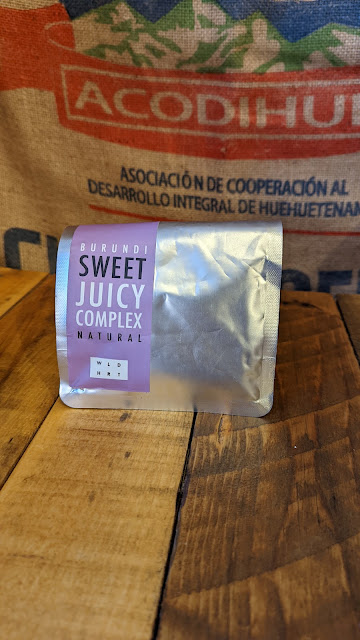Recently, both my sister and my mum and dad went on holiday's, and I was lucky enough to receive some coffee off both of them.
Generic coffee is something every coffee lover will come accross.
Some is good, some is bad, so I thought I would go through the two that I received, do a mini cupping session and see how they were.
The two coffees that were bought for me:
Left: A Medium-Dark to Dark roast from India (this unfortunately just came in silver wrapping with no information about it, which kinda sucks, but I've tried my best to figure out what I can about this kind of coffee)
Right: A Medium(ish) roast from Cyprus, a mixed blend of Brazilian, Central American, and African beans.
From researching about the way Indian coffee is done (process, roasting method etc) I could tell that they are very big on the monsoon process - this method basically means the green beans are left out in large open roof silos, or sometimes in an open warehouse during the monsoon season to be exposed to the moisture-laden winds. Meaning it will come away with a woody and ashy flavour to them.
A popular coffee that is sold all over India is the Indian Monsooned Malabar - which on looking at photos, I think this possibly could be it.
As for the Cypriot coffee, it gives little details about the coffee, but again is a very mixed roast. From researching, Cyrus coffee is unique and unlike most coffees from the rest of Europe, and is traditionally made in long handled pots called "mbirikia".
Reading up about cupping I decided to use the SCA official ratio for cupping, although they recommend using 3 different coffees, I only had 2 to try. The ratio that they brew is 8.25 coffee beans, to 150ml of water
After adding the water, I let it sit for 4 minutes.
As you can see from the picture above, the one on the right (Indian) had a lot more "foam" but no crema what-so-ever, where as the Cypriot coffee on the left, didn't have a lot of "foam" but had some sort of crema
Aroma's
Both of these coffees had quite a woody aroma, but the Indian was definitely more ashy in aroma than the Cypriot, and I actually preferred the smell of the Indian coffee.
Acidity + Body
The Cypriot coffee had a mild bitterness to it, but had a very light feel on the tongue.
The Indian coffee was sour and bitter, not my usual go to in a coffee, it had more of a rounded body than the Cypriot coffee, which gave it a few points.
Taste
Both coffees had an unusual taste (says the British white girl) obviously I knew they would, but I actually really struggled describing the flavours of the coffees, that I actually had to search through pinterest to get up a flavour wheel, so I could try and figure out what I was tasting.
The Indian coffee was a no from me. It had a very wooden taste to it (normally, would be fine) but this woody taste, I can only describe as what my old damp, mouldy playhouse in our garden smelt like. Damp wood. That's right.
The Cypriot coffee had more of a mild flavour, quite sweet and syrup-like, and although you could also taste the ashier side to it, its safe to say I much preferred this one to the Indian coffee.
I am yet to try these both as a "normal" (shudders, who uses the word normal to describe a coffee) coffee, but I only really have high hopes for the Cypriot coffee as the flavour agreed with me more.
If you've ever tried Indian or Cypriot coffee, what did you think? What are the best ways to brew it?
Leave me a comment and let me know.
If you want to help me keep doing what I do, you can donate me a "coffee" here
The Coffee Life
| Instagram | Twitter | Pinterest | Blog Lovin | Ko-Fi |
| Instagram | Twitter | Pinterest | Blog Lovin | Ko-Fi |













